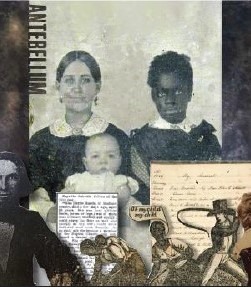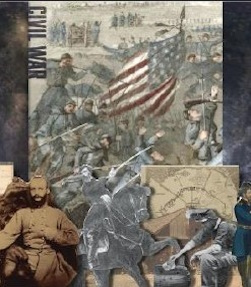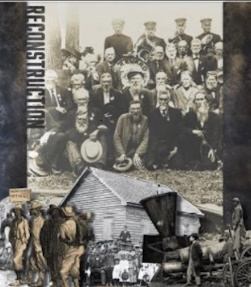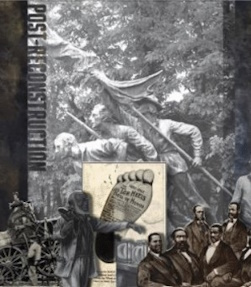The Civil War
After the election of Republican candidate Abraham Lincoln in November 1860, South Carolina and six other states seceded before he took office, but President Buchanan did not initiate hostilities.
The secession issue deeply divided North Carolinians, largely along party lines. Whigs tended to be Conditional Unionists, those who were generally against secession as long as the President didn’t interfere with enslavement or take up arms against the South. Democrats were more likely to be in favor of secession because many were planters whose wealth and livelihood were intrinsically tied to the institution of enslavement. North Carolina’s first vote to hold a secession convention failed narrowly on February 28, 1861. However, following Lincoln’s call for troops in response to the attack on Fort Sumter, the North Carolina legislature called a secession convention and left the Union on May 20th.
In the spring of 1861, President Lincoln called for a Union blockade of all Confederate seaports. Union General Benjamin Butler captured North Carolina Forts Hatteras and Clark the following August. By June of 1862, General Ambrose Burnside’s expedition had secured much of the North Carolina coastline for the Union including Roanoke Island, New Bern, Morehead City, Beaufort, and Washington.
The initial wave of pro-Confederate North Carolinian soldiers was limited but enthusiastic. Union occupation of the eastern parts of the state gave some residents a chance to join Union regiments. Struggling with too few enlistees, the Confederacy issued its first Conscription Act in April 1862. Every white male between the ages of 18 and 35 had to register for military service. Some women served the war effort as nurses, cooks, and laundresses for soldiers, while a few individuals became spies or, as in one case, posed as a man to fight alongside her husband. After the Battle of Antietam, Lincoln’s Emancipation Proclamation allowed for the formation of the United States Colored Troops (USCT), and many enslaved people who escaped to “contraband” camps joined the USCT.
Beyond the battlefields, women, children, enslaved people, the elderly, and people with disabilities faced all manner of dangers and difficulties on the North Carolina home front as their husbands, sons, fathers, and brothers enlisted or were drafted into the war effort. The consequences of the Civil War made life increasingly difficult for North Carolinians at home as they experienced fear, hunger, and violence resulting from food shortages, Confederate crop seizures, conscription, bushwhackers, Union occupation, and war profiteering.
While there were regular skirmishes and raids all across North Carolina during the Civil War, the major battles in the state were primarily at the war’s beginning, such as Union victories on Roanoke Island, Cape Hatteras, and New Bern, and at the end, including the Second Battle of Fort Fisher in January 1865 and the Battle of Wilmington in February, before General William T. Sherman entered the state in March.
- Sherman Enters North Carolina. After the March to the Sea through Georgia, Sherman turned his army north to South Carolina, the first state to secede. After occupying Columbia, he continued north as General Joseph Johnston gathered his scattered and demoralized Confederate troops in central North Carolina. On March 11, 1865, Sherman entered Fayetteville and took the arsenal as a temporary headquarters. Around 25,000 formerly enslaved people who followed Sherman’s army to Fayetteville were relocated to Wilmington.
- Demolishing the Arsenal. Colonel Orlando Poe of the 1st Michigan Engineers supervised the destruction of the Fayetteville arsenal. Teams of engineers ignited powder kegs and reduced buildings to rubble. Battering rams and fire destroyed what remained of the structure, as well as mills and newspapers that supported the Confederate war effort. The conflagration could be seen for miles around.
- The Last Weeks. In the last weeks of the Civil War, Confederate battalions crumbled. On March 28, 1865, US Army General George H. Stoneman led 6,000 cavalrymen in raids throughout western North Carolina, demolishing buildings and infrastructure. On April 9, General Robert E. Lee surrendered, but General Johnston remained in the field, finally surrendering 17 days later. The towns of Salem and Winston surrendered to Stoneman and were spared. On April 12, Stoneman captured the Confederate prison in Salisbury and liberated Union prisoners of war. Salisbury prison was later razed.
Preparing for the Aftermath. In Greensboro, General Johnston met with Jefferson Davis, who wanted to continue fighting but reluctantly allowed Johnston to negotiate a truce. On April 17, 1865, Johnston and Sherman met at Bennett Place, a farmhouse near Durham’s Station. The first draft of surrender was rejected, but General Sherman, under order by General Grant, secured official surrender terms on April 26. There were a few skirmishes before North Carolina heard the final shots of the war at Hanging Dog Creek on May 6.
Featured Story
A Letter to Jefferson Davis from George C. Beasley, April 21, 1862
Transcribed by Cheri Todd Molter Original Transcription: Camp of Starr’s Light Battery Greenville NC Apr 21st 1862 Hon J. Davis Pres C.S. I see by a...

Antebellum
Before the Civil War, the region’s geography, population, economics, and laws shaped the diverse lives of North Carolinians. Enslaved and free Black people rebelled against the institution of enslavement through violent revolt...

The Civil War
After the election of Republican candidate Abraham Lincoln in November 1860, South Carolina and six other states seceded before he took office, but President Buchanan did not initiate hostilities...

Emancipation
In May 1861, General Benjamin F. Butler gave semi-protected status and partial freedom to enslaved people who escaped to Union lines from Confederate territory, considering them essentially “contraband of...

Reconstruction
President Andrew Johnson’s limited Presidential Reconstruction prioritized reconciliation between the North and South. Its effect was to restore the status quo regarding old wealth and power in the South and the political oppression of...

Post-Reconstruction
In the 1880s, struggling farmers united in the Farmers’ Alliance, a national movement that sought agricultural reform and railroad oversight, and formed groups throughout the South...
